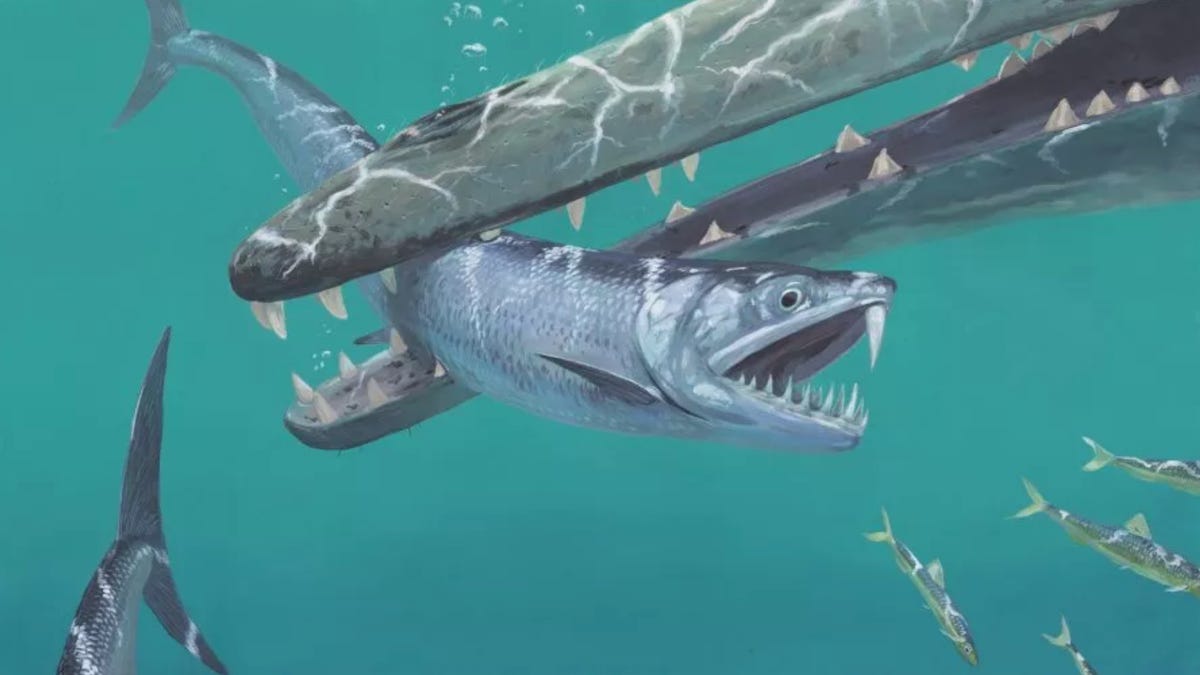Saber-toothed anchovies surface in ancient fossils
Today's plankton-eating anchovies had monsterlike ancestors, researchers discover.

Apparently, an ancient Caesar salad could rip off your face (though the larger fellow here seems happy to indulge).
After the mass extinction of the dinosaurs, nearly 66 million years ago, other creatures evolved to take their place. And one of those new critters happened to be a giant saber-toothed anchovy. That's the word from a study published this week in Royal Society Open Science.
"The loss of large predatory species left vacancies in ecosystems for new species to come and fill," Alessio Capobianco, lead author of the study from the University of Michigan, said in a statement to Newsweek. "It is thought the newly discovered species of fish were among the lineages that attempted to exploit these gaps by diversifying and evolving new adaptations."
The ancient anchovies were found in a nearly foot-long fossil embedded in a rock formation near Chièvres, Belgium, and in another, partial fossil from Pakistan's Punjab province, which preserved part of a larger specimen of the fish. Researchers estimate the fossils are between 41 million and 54 million years old.
See also: 7 best stargazing apps for spotting constellations in the night sky
Both fossils feature a single saber tooth in the fish's upper jaw. High-resolution imaging of the fish's skull later revealed that the ancient anchovies also had a row of fangs along the lower jaw. Unlike docile, plankton-eating anchovies today, scientists speculate, the ancient fish used its fangs to hunt prey.
Researchers determined that the partial fossil from Pakistan preserves a distinct species, which they named Monosmilus chureloides, after a shape-shifting creature with sharp fangs found in South Asian legends. Monosmilus chureloides could grow to be 3.2 feet in length, 10 times the size of today's tiny anchovy, and its saber tooth was approximately 1 inch long, about 30 percent the length of its skull.
The discovery of the ancient anchovy highlights the species' evolution toward its current tiny body, while opening up more questions for scientists about how creatures of the ocean became what they are today.

